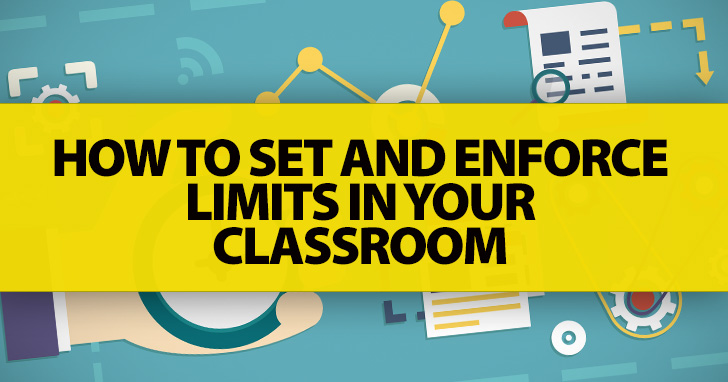So How Many Grandmothers Do You Have?: Fairly Addressing Dead Grandmothers, Sick Uncles, and Other “Family Emergencies”


In fact, pushing teachers to the line has long been popular entertainment for students. Most often, of course, it isn’t intentional. All students have needs; many have a lot of needs, and many of those needs are huge and beyond the individual teacher’s control. Because teachers have so many conflicting needs to address in a finite time, setting limits on what teachers can and cannot be reasonably expected to do is paramount.
We also come from a culture that has sometimes shocking expectations of teachers: note the portrayal of teachers in the movies. If we are not able to live up to those “hero” standards, such as single-handedly turning around a failing community in a few months, as Michelle Pfeiffer did in “Dangerous Minds” or draining herself financially and damaging her marriage for the good of the school as Hillary Swank did in “Freedom Writers,” we are then villains.
In addition to it not being good for the individual teacher, having no limits is ultimately not good for the students they serve, the teaching profession as a whole, and the school community. The lack of limits shifts responsibility onto the teacher from students in addressing their own needs, leaving them dependent on the teacher. It also is bad for the school culture as a whole—why set up a budget for books and supplies, for example, if you know the classroom teachers are going to foot the bill out of their own pockets, as they often do? Teachers, by engaging in this kind of self-sacrifice and failure to set limits, are actually enabling a dysfunctional culture, where those in charge fail to set priorities. And certainly the lack of limits is not good for the teachers, draining them financially, emotionally and physically. In fact, about half of all teachers leave the profession within five years. For good teachers to keep teaching, they must learn to set limits.

Who should you help first? Who can wait or help themselves? It’s pretty common even at the college level to have five to ten students crowding the teacher’s desk before and after class needing help “right now.” Determining who needs help immediately and if who (probably all) can wait until office hours is critical.
Decide what you can realistically be expected to do for students and what is beyond your time, expertise and resources. Students sometimes demand not only time and academic help but also extra psychological, financial and social support. Communities also seem to take it on faith teachers will spend a hefty portion of their salaries and time on what others in the community should be giving. Set limits on how much and what you can give. To not do is of course bad for the individual teacher but also enables others in not taking responsibility that is really theirs.
Determine the appropriate forum for helping someone. I teach at a college of mostly lower-income, first-generation college students, where it is apparently considered appropriate to come up to the instructor while she is lecturing with the whisper “I need to talk to you now.” Nothing will satisfy the student until I step out of class to hear her “emergency.” I’ve had to really set limits with this class on when they can present their emergencies: I’m available before class, after class, during office hours and by appointment. They also have my email address and office phone number where they can bug me just about any time. Just not during class. Also there is the nagging question: if it were really such an emergency, why is the student in class at all and not, for example, at the emergency room? There are other people in the universe better equipped on occasion than the teacher to address emergencies. Enabling students by helping with each emergency helps no one, ultimately.
Deciding what your limits are is only a first step, of course, although it is important. After that comes the more difficult part of stating the limits and enforcing them. This is harder than it sounds, but it can be done. In the example already cited of the class where students’ individual emergencies took precedence over the class lecture, setting limits became important because this was a fairly regular occurrence.
After it happened once, I stated the limit. “When I am teaching, please don’t interrupt. See me before class, phone, email….”etc. This worked for several days, and then there was the student who ran in late and came up to me while I was lecturing: “Ms. Stacia, I really need to talk to…”
“Elizabeth, remember what we said about coming up during class? Please wait.”
“But this is really, really important—we need to talk now…” etc.
So more had to be done. This is where the mantra comes in.
My mantra is something like “Talk to me later, before class, after class, email, or call.” If I repeat that each time a student comes up—by rote, in a monotone—they finally get the message. Or they don’t come up anymore just because they don’t want to hear the mantra. Either way works.
Students shouldn’t feel cut off by you, with no alternative. (Note I didn’t say there were, actually, no alternatives, just that students might feel there are not.) Suggesting an alternate might be helpful. In the case of the chronic problem of interrupting during lecture—well, of course, the mantra regarding seeing me outside of class time was an alternative although apparently not a good one for some students. Find an acceptable alternative to your “line in the sand” might help: e.g., “I can’t address that problem at this minute, but if you have a seat, we can talk as soon as I’m finished here” could be a solution both parties can live with.
Setting limits and failure to do so has consequences for the student, teacher, and community as a whole. Students don’t learn how to problem-solve; the teacher is left drained, other leaders within the school community don’t fulfill their own commitments to students, and the whole community suffers from the loss of good teachers every year. Therefore, setting limits is critical to the practice of teaching.